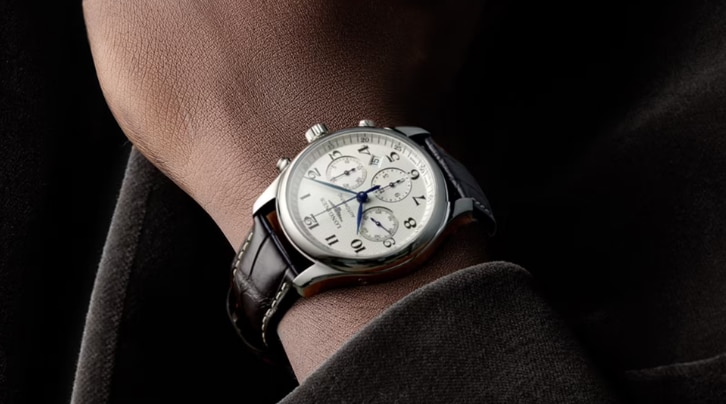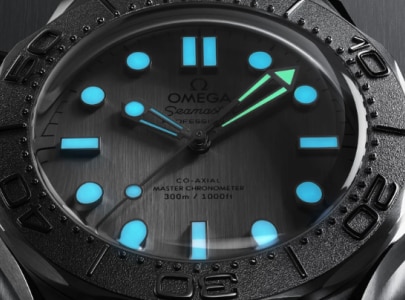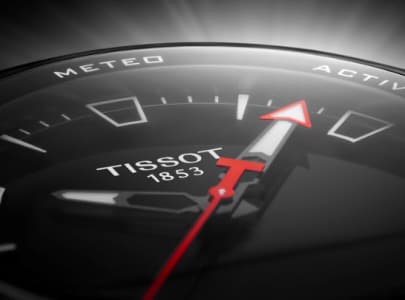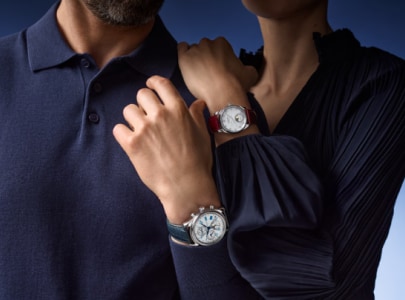The chronograph, all too often mistakenly confused with the chronometer, is an emblematic function of precise time measurement that today is a common feature in the world of watches. Yet, this horological complication, far from being a mere functionality, is the fruit of a true revolution in the industry. Once, the chronograph was a symbol of technical innovation with extensive practical implications. In the fields of aeronautics, automotive, and even within military ranks, the chronograph proved to be an essential tool. Over time it has become more common and has charmed the general public, but its legacy as a revolutionary instrument remains an essential chapter in the history of horology.
What is the etymology of the word 'Chronograph'?
Before diving into one of the most emblematic functionalities of horology, it is crucial to go back to the etymological origins of the word itself. The term "chronograph" draws its roots from ancient Greek, combining "Chronos," the personification of time, with "graph," meaning "to write." It is in this fusion of meaning that the power of this horological innovation lies.
The chronograph: A brief history of time
The first known chronograph watch was created by Louis Moinet in 1816, not for sports, but for astronomical observation, thereby marking the beginning of innovation in the precise measurement of time. However, it was in 1821 that Nicolas Mathieu Rieussec developed the first patented chronograph designed for the King of France Louis XVIII, a passionate horse racing enthusiast, to measure time to the half-second. This invention used ink to mark the elapsed time, a revolutionary method at the time. The evolution of the chronograph continued with the introduction of the reset system by Adolphe Nicole in 1862, allowing the user to measure successive time intervals without needing to stop the watch. This innovation marked a key milestone, making the chronograph more practical and versatile for various uses, particularly in sports and the military.
In the 20th century, the chronograph saw significant advances with the appearance of the first wristwatch chronograph in 1915, offering even more convenience and accessibility. The 1930s saw the introduction of chronographs equipped with additional functions such as tachymeters, allowing the measurement of speed over a given distance, further popularizing these instruments among pilots and motor racing enthusiasts.
The mid-20th century was marked by a race for innovation, culminating with the creation of the first automatic chronograph in 1969.
How does a chronograph work?
Put simply, the chronograph allows for the precise measurement of periods between two points in time. Equipped with specially designed buttons on its case, it offers the possibility to start, stop, and reset the time counting at will, very useful during apnea contests in the pool during summer!
What are the different types of chronographs?
The "Flyback" chronograph
A flyback chronograph, also known as "retour en vol" in French, is an advanced feature found on some mechanical chronographs. This function allows the user to reset and restart the chronograph with a single button press, whereas a standard chronograph would require three presses: one to stop the current measurement, one to reset the hands to zero, and a third to restart a new time measurement.
The flyback mechanism is particularly useful in situations where time needs to be measured in rapid and consecutive sequences, such as in aviation—hence its name—where pilots might need to quickly and repeatedly calculate short intervals without losing precision. Naturally, we think of models equipped with this type of chronograph, like the Longines Spirit Flyback, the Blancpain Air Command Flyback Chronograph, or more recently, the new Breguet Type XX reintroduced last summer.
The rattrapante chronograph
The rattrapante chronograph, with its technical elegance, offers time measurement with fascinating precision. This function allows for the measurement of simultaneous time intervals thanks to two superimposed hands, one of which can be stopped independently of the other and then "caught up" to synchronize the two. It's a feat of horological engineering that combines complexity and refinement, captivating watch enthusiasts with its ingenuity and functionality. A true mechanical artwork, the rattrapante chronograph embodies the excellence of traditional watchmaking in its quest for precision and innovation.
The high-frequency chronograph
In the world of watchmaking, the high-frequency chronograph represents a pinnacle of precision and innovation. This technology, which makes the movement vibrate at a higher frequency, allows for stunningly accurate time measurement. Watch lovers admire these pieces for their ability to split seconds with increased precision, offering a finer reading of time. The high-frequency chronograph illustrates the unceasing quest of watchmakers to push the limits of mechanics and precision.
Masters of chronography: The legendary timepieces of Longines, Breguet, and Omega
Longines: The matriarch of chronograph watches
From the beginning, Longines distinguished itself by introducing its first chronograph in 1878, a mechanical piece of remarkable precision that quickly gained recognition in sports and adventure circles. In the 20th century, the brand solidified its reputation by providing timing instruments for Olympic events, underlining its expertise in precise time measurement.
Chronographs from Longines, such as the iconic Longines Avigation BigEye and the refined Heritage Chronograph, perfectly illustrate the marriage between traditional aesthetics and modern watchmaking technologies. These watches are not just time-measuring tools; they are a reflection of a heritage, bearing the stories of aerial exploration, sporting competitions, and technical innovations. Longines has managed to preserve its legacy while adapting to contemporary demands, offering chronographs that combine functionality, elegance, and reliability.
The wings of time: The Breguet Type 20 chronograph
In the early '50s, the French Air Force issued a tender with a very precise and demanding specification: accuracy in short time measurements, a chronograph function with a "flyback" feature for instant resetting and restarting of the chronograph, optimal readability with clear dials and luminous hands, and resistance to temperature variations, shocks, and water. These requirements ensured the performance and reliability necessary for aerial operations. Breguet won the tender with its now-iconic model, the Breguet Type 20, marking the house's involvement in aviation and chronograph technique. The iconic original version of the Type XX was slightly modernized at the dawn of its 70th anniversary and saw its diameter slightly enlarged, benefiting from a manufacture movement in the two introduced models: one military-inspired, the other civilian-inspired. Both versions are equipped with the "flyback" function, an essential feature of the new promising caliber 728 for the future of the Type XX in terms of product innovation. The design of these launching and resetting mechanisms ensures precise and clear use. The action on the buttons is consistent and well-dosed regardless of the activated function. To ensure immediate and delay-free activation of the chronograph hand, a vertical clutch mechanism has been favored for its responsiveness. Connoisseurs will appreciate the nostalgic details that evoke the 1950s, particularly the shades of green reminiscent of the radium treatment used at the time.
Omega Speedmaster: the chronograph that conquered the moon
The Omega Speedmaster Chronograph represents a true symbol in the history of watchmaking. Originally designed in 1957, it has traveled through the decades by adapting to technological demands while maintaining its timeless aesthetics. Known for its robustness and precision, the Speedmaster became famous for being chosen by NASA to accompany astronauts on lunar missions, thus becoming the first watch worn on the Moon in 1969. This model is equipped with a split-seconds chronograph, a tachymeter on the bezel, and often a manual-winding mechanical movement, although automatic winding versions also exist. Its iconic design, characterized by a black dial, distinctive hands, and clear chronograph counters, makes it not only a reliable tool for professionals but also a coveted collector's item for watch enthusiasts. The Omega Speedmaster Chronograph embodies innovation and adventure, symbolizing the spirit of exploration and the quest for self-improvement that can regularly be seen on the wrists of George Clooney, Buzz Aldrin, and Victor Vescovo, friends and ambassadors of the brand.
Eleonor Picciotto



